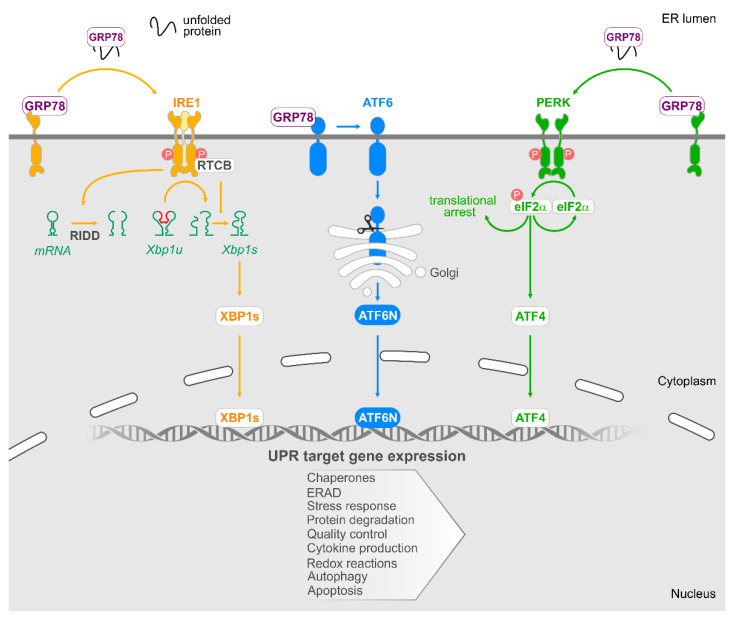Figure 1.
The unfolded protein response. Accumulation of unfolded proteins within the ER lumen leads to the dissociation of GRP78 from three ER stress sensors IRE1, PERK and ATF6, and their subsequent activation.Activation of IRE1 results in the removal of a 26 nucleotide intron from XBP1u mRNA. RTCB acts to ligate the mRNA, and this product is translated into the transcription factor XBP1s. Additionally, activated IRE promotes regulated IRE1 dependent decay (RIDD). RIDD activity of IRE1 is responsible for the cleavage of a subset of RNAs/miRNAs. When ATF6 is activated, it is cleaved in the Golgi to form an active transcription factor ATF6N. Upon activation, PERK phosphorylates eIF2α, and this results in the attenuation of global translation. However, the transcription factor ATF4 is active, and it acts to upregulate a subset of genes. The transcriptional programme mediated by XBP1s, ATF4 and ATF6N promotes expression of chaperones, components of ER associated protein degradation (ERAD), increased ER capacity and reduced protein translation to ameliorate ER stress and restore homeostasis. Additionally, UPR-mediated gene expression also directly impact autophagy, cytokine production and apoptosis.

